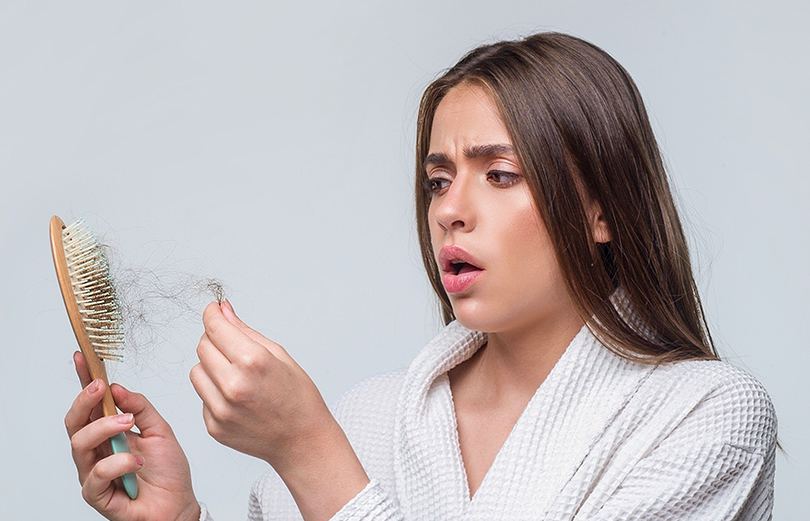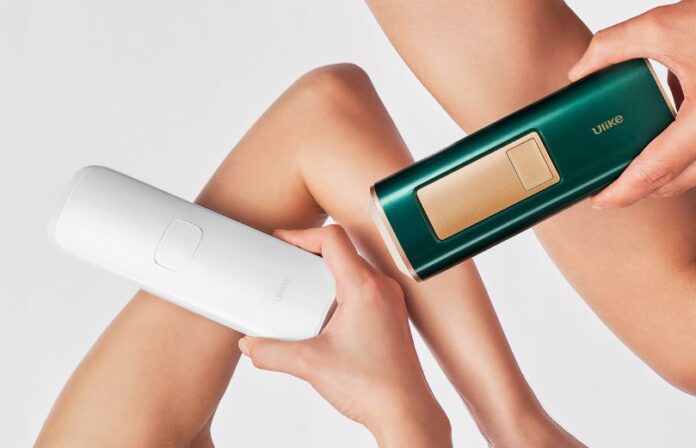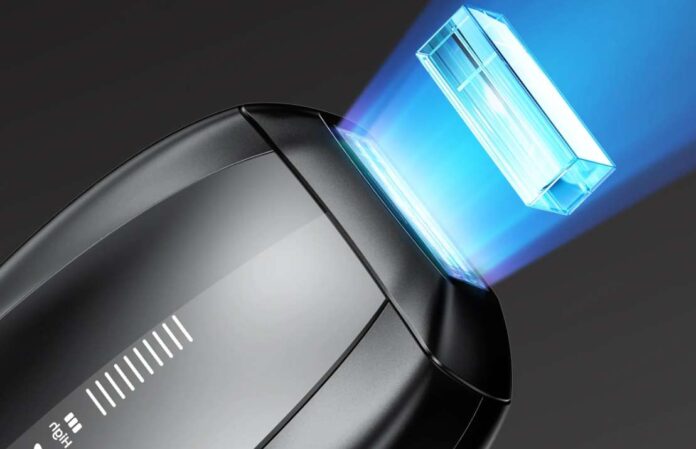Introduction
Many women in the world today suffer from hair loss at different phases of their lives. While it may happen naturally with age, it can also be a result of some medical conditions, such as Polycystic Ovarian Syndrome
1
, PCOS for short. This is a condition that affects different women in the world today. It creates a hormonal imbalance that affects different body processes and precipitates sign such as acne, hair loss, hirsutism, and irregular cycles, amongst others.
In fact, a study shows that PCOS affects about 20% of women in the world
2
, and the one of most common problems is hair loss.
Hence, in this article, we will discuss PCOS, how it causes hair loss, symptoms of PCOS-induced hair loss
3
, treatment options and answer some frequently asked questions.

What is PCOS?
Polycystic Ovary Syndrome is a condition in which the ovaries overproduce androgen hormones
1
. These hormones are involved in the onset of puberty and initiate hair growth in the pubic region and underarms.
Some individuals with PCOS tend to develop various cysts in their ovaries. However, people can get PCOS without developing cysts as well. Cysts form when an egg doesn’t mature from the ovary during ovulation
4
. As a result, the cysts produce excess androgens, causing various symptoms. Some of these symptoms include:
❖ Acne
❖ Weight gain
❖ Excess body hair growth
❖ Infertility
❖ Dark patches of skin
❖ Irregular menstrual bleeding
❖ Excess sebum on the skin

Causes Hair Loss in PCOS: Why It Happens?
Usually, a lot of conditions can lead to hair loss, including high fever, poor nutrition, emotional stress, certain medications, and some disease conditions, amongst others. However, in women with PCOS, increased levels of androgen hormones are the main cause of hair loss
5
. The major androgen hormones are testosterone, dihydrotestosterone, and androstenedione, and of these three, testosterone and dihydrotestosterone are the hormones we are particularly interested in in this condition
6
.
Both women and men produce androgen hormones, which means both can suffer from androgenetic alopecia. However, the production and regulation of these hormones are quite different in men and women. In men, androgen hormones are produced by testosterone from their testes, and women produce theirs from the ovaries and the adrenal gland.
And because these hormones are largely male hormones, responsible for the growth and development of male characters, men produce more testosterone than females. In fact, they (men) have a lot more chemical receptors in the tissues that respond to these hormones than in women
6
.
Interestingly, women are more sensitive to these hormones than men. This means a slight surge in the level of androgen hormones can precipitate symptoms of hyperandrogenism such as hirsutism, acne, and of course, alopecia
7
.
Let’s take a closer look at the role of one of these hormones in alopecia.
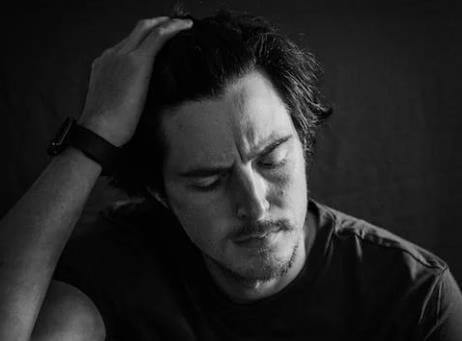
The Role of Dihydrotestosterone.
Ordinarily, free testosterone in the blood gets oxidized and converted to DHT
8
, which then stimulates hair follicles to grow hair. But sometimes, that’s not the case.
Androgens have diverse effects on the hair follicles. In some areas, such as the beard, armpits, and pubic areas, they stimulate the hair follicles to grow, and in some areas, especially the scalp, they suppress hair growth. This is quite common in genetically susceptible individuals.
In susceptible individuals, the hair follicles in the scalp can become oversensitive to testosterone, and high levels can result in hair loss. The whole mechanism behind this is not fully known. However, it’s been recorded that the way your hair follicles on the scalp react to increased androgens is largely genetic
9
.
In women with a history of alopecia on either side of the family, the risk of hair loss is more pronounced.
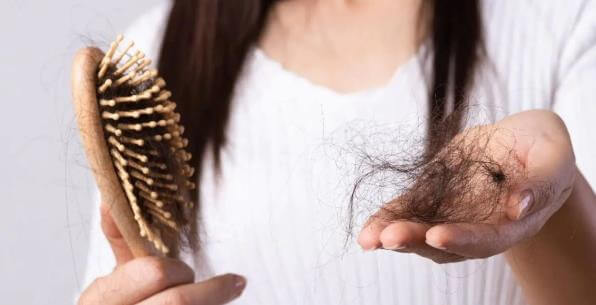
Some Symptoms of PCOS Hair Loss
To start with, PCOS can result in the shedding of hair regularly. You begin to see hair on your comb, clothes, or furniture than usual. Sometimes, when you sleep, your pillowcase collects hair overnight. Or if you’re in the shower, you may find clumps of hair here and there.
Note that this stuff may happen regularly and is not a symptom of PCOS hair loss. However, it becomes a problem if you lose hair frequently and in larger clumps than usual.
Moreover, PCOS hair loss can also present with the loss of hair from the root, including the follicles. This means you may just wake up one day and see a large chunk of your hair completely removed along with the follicles
1
. And because PCOS results in very dry hair, hair loss may appear in the breakage of the strand of hair from brushing or heat. This can result in the scalp becoming more visible at the crown and hairline, and it may become more frizz, as a result of the hair breakage.
Furthermore, PCOS hair loss may result in the scalp becoming more itchy and dry
1
. In fact, some individuals with PCOS have reported coming down with dandruff and buildup. The hair becomes more finer, and harder to style or even relax without applying many hair products.
Typically, PCOS results in hair loss mainly in the frontal-parietal region, and gets significantly thinner in the middle.
According to the Ludwig scale, there are three stages of hair loss in women
10
. They are;
❖ There are small areas of hair loss, with fragile and thin hairs among the healthy ones.
❖ There are bald patches and many thin hairs.
❖ Hair is fuzzy and almost invisible.
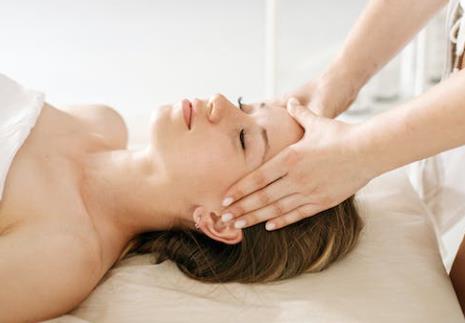
Treatment Options for PCOS Hair Loss.
Detecting the condition early will help prevent further hair loss and make the treatment more effective. Hence, once you begin to see anything consistent with the symptoms already discussed, ensure you seek help immediately. That’s how you stay fit and reduce the symptoms.
The good news is whether you discover the condition early or not, PCOS is a lifestyle condition that can be treated efficiently and rapidly by living a healthy lifestyle. And for your PCOS hair loss, below are some of the options you can explore to get your hair back fuller and healthier.
1.
Get Medical Help.
If the condition is detected early, hair treatments and other lifestyle modifications (which will be discussed shortly) might be sufficient to treat it. However, if you’re losing large chunks of hair regularly, you should seek the help of a medical practitioner.
They will carry out different medical tests, such as hormonal tests and ultrasounds, to help better understand the problem. They also check the levels of some vitamins and nutrients, such as vitamin B12, D3, and ferritin, among many others, to understand the cause and contributing factors to hair loss.
For medications, oral contraceptive pills may help reduce the frequency of hair loss associated with PCOS
11
.These pills work by regulating hormonal imbalance and reducing the levels of male hormones in your body, thereby reducing hair loss and boosting hair growth.
However, ensure you get the clearance of your doctor before using these pills, as they can also precipitate some ugly side effects. Moreso, ensure you go for a routine check-up regularly to better understand how your body works.
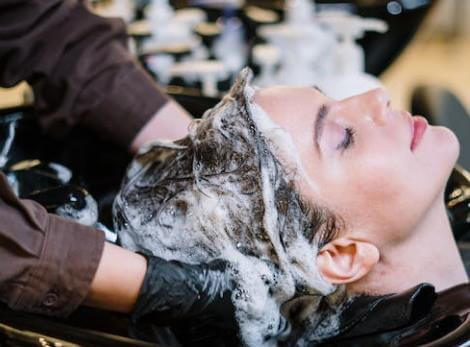
2.
Consider Hair Treatments
Hair treatments are another remedy for hair loss associated with PCOS. Lotions or hair products, especially those that come as liquids or foams, can massage hair efficiently and reduce hair loss.
You may also consider taking oral biotin supplements to further enhance the action of these hair products. Usually, it takes about 2-3 months to begin seeing results.
You may also consider a hair transplant. During hair transplants, doctors take our hair follicles and graft them in areas where the thinning is significant, and after a while, hair begins to grow back. It is also important that you get your doctor’s cleared before going ahead with a hair transplant.
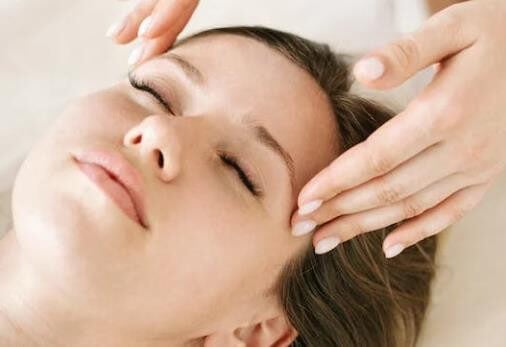
3.
Home Remedies
Lifestyle modifications are always a good way to reduce PCOS hair loss. Firstly, ensure you avoid hard and narrow-toothed combs. A soft and wide-toothed comb that will easily sweep through your hair should be preferred. It reduces tangling and hair loss.
Secondly, a mild workout can also help reduce the production of male hormones and reduce the chances of PCOS hair loss. Moreso, hair massages are another great remedy for PCOS hair loss.
Hair massages ensure even blood flow to your scalp, which can prevent dryness and ultimately, hair loss. Consider styling your hair differently, too. If any styles will put too much stress on your hair, you may want to avoid them until the condition is completely treated.
You can also style your hair in a way that hides baldness or hair thinning. Natural masks can also give your hair a new life. They supply your hair with enough nutrients to make it grow, shiny, and smooth, and enhance texture.
4.
Eat Healthy
Improving your eating habits is good for your body and your hormones. Eating healthy and fresh foods can help reduce weight. Weight reduction helps regulate hormonal imbalance and enhances insulin sensitivity, which may help lower the production of male hormones and ultimately, reduce hair thinning
12
.
When hair thinning has stopped, you need to maintain healthy living, including eating healthy food and workouts, to sustain the integrity, quality, and strength of your hair.
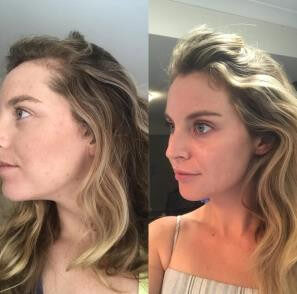
Is PCOS Hair Loss Reversible?
Yes, PCOS hair loss is reversible. Once the underlying cause, hormonal imbalance, is treated, you will experience full and healthy hair regrowth. However, you may continue to struggle with hair loss if you only apply hair products to stimulate hair growth and wear natural masks without addressing the major cause of the hair loss.
This explains why you should see a doctor. You will be correctly diagnosed and placed on medications to treat the condition, after which you will experience significant improvement in the quality and strength of your hair and symptom reduction.
Moreso, if your hair is already damaged, you may need to first get the hair fixed before you experience regrowth. Note that hair regrowth won’t happen in a week or a month, depending on the hair type. Hence, be patient and continue with the treatments until the desired result is achieved.
Finally, during the treatment, ensure you maintain a healthy diet, keep fit, and stay away from anything that can impede the healing process.
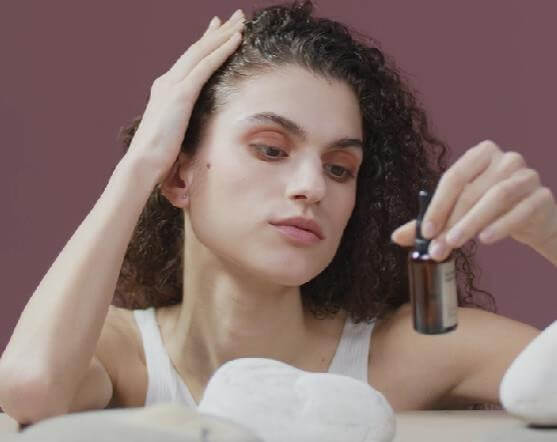
How Can I Make Hair Loss Less Noticeable
There are ways you can effectively reduce the visibility of hair loss caused by PCOS. Here are some suggestions, for hair conditions;
1.
For Thinning Hair
Try using products that add volume to your hair to make them appear fuller. Partial wigs can be an option for covering thinning areas without using clips or glue.
2.
For a Widening Part
Opt for bangs that start higher up on your head as this can help create the illusion of a part. You may also try parting your hair in other areas. Take a root cover-up powder and apply it to your scalp.
3.
For Bald Patches
Alternatively, you could try using scarves or headbands wide enough to conceal the affected areas. Choosing hairstyles that naturally cover bald spots, such as low ponytails can also be helpful.

Conclusion
Hair loss may negatively impact psychological well-being and self-esteem of affected individuals. Therefore, it’s important to take this condition very seriously and seek advice from your doctor as soon as you notice any symptoms.
Moreso, we have discussed lifestyle changes and home remedies that may help stimulate hair growth and maintain the quality and strength of your hair. So, go through these options, consider making consistent changes, and see your physician immediately if it’s getting out of control.
References
1. Deswal, R., Narwal, V., Dang, A., & Pundir, C. S. (2020). The Prevalence of Polycystic Ovary Syndrome: A Brief Systematic Review. Journal of Human Reproductive Sciences, 13(4), 261-271.
https://doi.org/10.4103/jhrs.JHRS_95_18
2. Prasad S, De Souza B, Burns LJ, Lippincott M, Senna MM. Polycystic ovary syndrome in patients with hair thinning. J Am Acad Dermatol. 2020 Jul;83(1):260-261. doi: 10.1016/j.jaad.2020.01.075. Epub 2020 May 20. PMID: 32444272; PMCID: PMC8291365.
3. Sadeghi HM, Adeli I, Calina D, Docea AO, Mousavi T, Daniali M, Nikfar S, Tsatsakis A, Abdollahi M. Polycystic Ovary Syndrome: A Comprehensive Review of Pathogenesis, Management, and Drug Repurposing. Int J Mol Sci. 2022 Jan 6;23(2):583. doi: 10.3390/ijms23020583. PMID: 35054768; PMCID: PMC8775814.
4. Witchel SF, Oberfield SE, Peña AS. Polycystic Ovary Syndrome: Pathophysiology, Presentation, and Treatment With Emphasis on Adolescent Girls. J Endocr Soc. 2019 Jun 14;3(8):1545-1573. doi 10.1210/js.2019-00078. PMID: 31384717; PMCID: PMC6676075.
5. Ustuner, E. T. (2013). Cause of Androgenic Alopecia: Crux of the Matter. Plastic and Reconstructive Surgery Global Open, 1(7).
https://doi.org/10.1097/GOX.0000000000000005
#
6. Weber B, Lewicka S, Deuschle M, Colla M, Heuser I. Testosterone, androstenedione, and dihydrotestosterone concentrations are elevated in female patients with major depression. Psychoneuroendocrinology. 2000 Nov;25(8):765-71. doi: 10.1016/s0306-4530(00)00023-8. PMID: 10996472.
7. Kopera D, Wehr E, Obermayer-Pietsch B. Endocrinology of hirsutism. Int J Trichology. 2010 Jan;2(1):30-5. doi 10.4103/0974-7753.66910. PMID: 21188021; PMCID: PMC3002408.
8. Kim N, Kim J, Lim K, Park J. Role of dihydrotestosterone in whole-body energy utilization during acute running exercise in mice. J Exerc Nutrition Biochem. 2018 Jun 30;22(2):7-11. doi: 10.20463/jenb.2018.0010. PMID: 30149420; PMCID: PMC6058065.
9. Grymowicz M, Rudnicka E, Podfigurna A, Napierala P, Smolarczyk R, Smolarczyk K, Meczekalski B. Hormonal Effects on Hair Follicles. Int J Mol Sci. 2020 Jul 28;21(15):5342. doi: 10.3390/ijms21155342. PMID: 32731328; PMCID: PMC7432488.
10. Dinh QQ, Sinclair R. Female pattern hair loss: current treatment concepts. Clin Interv Aging. 2007;2(2):189-99. PMID: 18044135; PMCID: PMC2684510.
11. Shah, D., Patil, M., & Working Group, N. P. (2018). Consensus Statement on the Use of Oral Contraceptive Pills in Polycystic Ovarian Syndrome Women in India. Journal of Human Reproductive Sciences, 11(2), 96-118.
https://doi.org/10.4103/jhrs.JHRS_72_18
12. Schenk S, Harber MP, Shrivastava CR, Burant CF, Horowitz JF. Improved insulin sensitivity after weight loss and exercise training is mediated by a reduction in plasma fatty acid mobilization, not enhanced oxidative capacity. J Physiol. 2009 Oct 15;587(Pt 20):4949-61. doi 10.1113/jphysiol.2009.175489. Epub 2009 Sep 1. PMID: 19723783; PMCID: PMC2770158.

 By Nancy H, PharmD
By Nancy H, PharmD
 Updated: August 4, 2024
Updated: August 4, 2024
 9 minutes
9 minutes








